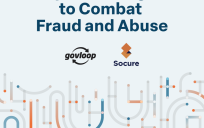Government agencies are under increasing pressure to adopt innovative solutions that enhance their services while operating within tight human resource and funding constraints. While generative AI (GenAI) presents a unique opportunity to streamline operations and improve citizen engagement, it’s not a mature technology. Content and knowledge management leaders are genuinely concerned about both its ability to function correctly — without generating inaccurate responses — and the time and resources necessary to make it work in the first place. Legacy search tools have failed to respond to users’ questions effectively; chatbots and intelligent virtual assistants were supposed to solve the customer experience problem but ended up taking a lengthy and costly period to implement and then fell short on delivering the desired outcomes. How do motivated agency employees resolve any skepticism and help their leaders to consider a practical GenAI project that will deliver immediate impact without breaking the organization’s resources now and in the future?

To convince today’s agency leaders that it is feasible to implement a GenAI solution, content and knowledge management leaders must conduct a Proof of Concept (POC) or trial on the organization’s data that can be executed quickly, give correct responses, and showcase the crucial analytics and technologies that will enable successful operations now and moving forward. It must also address concerns about security and scalability to avoid managing disjointed tools. Finally, it must provide evidence of an initial return on investment (ROI) to prove that the project is worthwhile.
Also, it is essential to address concerns about reliability, resource consumption, and cost-effectiveness. This guide outlines a strategic approach to demonstrate the value of a GenAI solution through a POC while considering key stakeholders’ needs and the overall ROI.
We will start with the POC. The user must identify a subset of public-facing information that is simple for vendors to assess. This subset should include the content that can accurately address the most popular questions and a few examples where existing tools fail to perform, such as the ability to interpret different meanings of a common term like “security”, which could refer to physical security of a building, personal security, or cybersecurity, depending on the context of the question. This content set should also contain agency- and domain-specific language that would be difficult for a GenAI solution to understand out-of-the-box.
Next, identify real-world user questions, both keyword and longer queries, from recent search history that are related to the content selected. Engage representative stakeholders who need to be involved in the initial implementation and ongoing maintenance to evaluate the resources necessary for the solution, since this is where the majority of the cost of any solution resides.
Once this information is assembled, work with vendors (or use vendor’s trial offering) to create the actual POC, which will demonstrate several elements conclusively. First, the responses must be accurate, direct, and free from hallucinations (try asking a question that cannot be answered in the data provided for this test). Second, the POC should be completed in a week or two. If it takes the vendor a long time, it will take the agency even longer to deploy. Next, understand the skills required to train the system to understand all of the agency’s specific language. Agency stakeholders should be able to intuitively and quickly tune and optimize the tools as terms and needs change. All of these evaluation criteria require that any GenAI tool remove the typical AI complexity and the need for technical resources for the agencies.
Selling a GenAI project internally to government leaders necessitates a well-structured approach that addresses all the major concerns associated with this new technology. By explicitly demonstrating accuracy, efficiency, and the potential for resource savings through a rapid POC on a good sample of public-facing data, agencies can build a compelling case for the adoption of GenAI technology. Engaging relevant stakeholders and calculating the tangible ROI and citizen impact will further solidify the project’s viability. As technology continues to transform government operations, the strategic integration of GenAI stands to revolutionize information management and citizen engagement.
Ryan Welsh is the founder and CEO of Kyndi, a global provider of the Kyndi Platform for the Natural-Language-Enabled Enterprise, an AI-powered platform that empowers people to do their most meaningful work. To learn more visit https://kyndi.com/ or follow them on LinkedIn and Twitter.





Leave a Reply
You must be logged in to post a comment.